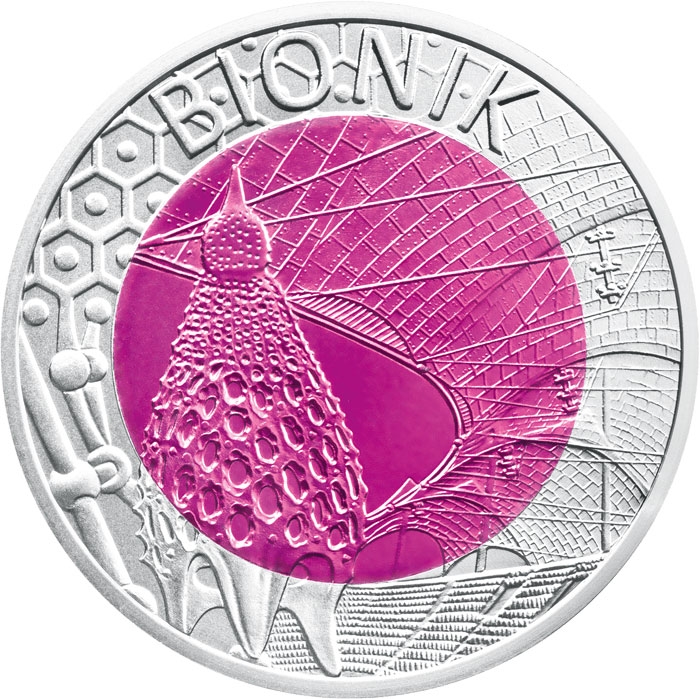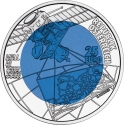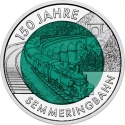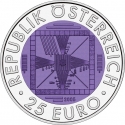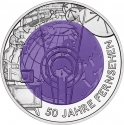You are about to finish your registration. Please check your mailbox (including spam folder). There should be a letter with a confirmation link. Check setting to make sure that your e-mail address is correct.
Send letter againDescription
As eye-catching, innovative and informative as its predecessors, Bionik, the exquisite purple 2012 addition to the 25 euro Silver Niobium series, pays fitting tribute to how evolution in the natural world acts as a prototype for technology.
Each year’s issue is composed of a disc of 7 grams of 998 pure niobium surrounded by a 9 grams of 900 fine silver outer ring. The brilliant colors of the disc are achieved by anodic oxidation—a precisely controlled electrochemical process that deposits a fine layer of oxidized niobium on the surface of the disc. The color is determined by the thickness of the layer. From 2003 through 2013, each year’s design was processed with a single color; beginning in 2014, the finely detailed images began to be two-toned, with selectively colored elements set off against a solid background of a complementary color.
Niobium was chosen for the core due to its workability as a coinage metal and its low reactivity (which prevents its corroding where it comes in contact with the silver ring). Niobium’s larger application is in the aerospace industry, making it a thematic fit with the series, whose designs have focused on achievements in science and engineering.
The coins are encapsulated, packed in a red case with a handsome grey slipcover, and comes with a certificate of authenticity.
Obverse

|
Evolutionary pressure typically forces living organisms to become highly optimised and efficient. A prime example is the water-repellent nature of the lotus flower and of shark skin, a phenomenon fundamental in the development of paint. By the same token, the chambered shell of the nautilus has influenced architectural design and the mechanics of bird flight have clearly inspired aviation. All four of these examples feature on the coin’s obverse. A radiolarian, the plankton that inspired Spanish modernist architect Antoni Gaudí, is depicted in the foreground. 25 |
|---|---|
Reverse

|
The reverse focuses on the use of bionics in architecture. A radiolarian, the plankton that inspired Spanish modernist architect Antoni Gaudí, is depicted in the foreground, while the reverse’s background shows an interior view of Munich’s Olympic Stadium, the roof of which was based on findings in bionics. BIONIK |
| Edge |
25 Euro
Silver Niobium Coin
Bionics
Subscribe series
KM# 3212
Silver Niobium Coin
Bionics
Characteristics
| Type | Commemorative Issue (Non-circulating) |
| Material | Bi-Metallic |
| Ring | Silver |
| Center | Niobium |
| Weight | 16.5 g |
| Diameter | 34 mm |
| Thickness | - |
| Shape |
|
| Alignment | Medal |
| Mint |
Austrian Mint
|

